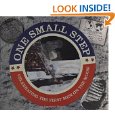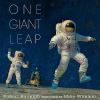Put on your space suits and get ready for a tour of the galaxy! We are going to be looking at some great websites today. I have used every one of these sites (except for the water rocket) with my 8th grade Earth/Space class, but activities can be adapted for all aged children.
Answers in Genesis has a large video on demand collection that you can watch to introduce, develop, or review concepts on topics you are studying. This particular video discusses the flaws in the Big Bang Theory and is directed toward middle school age and older.
Are you ready for your tour of space? First things first, how does a space suit actually work? Here is a great site that explains how that bulky suit actually works. space suit
Budding scientists (and their teachers too) can explore how a rocket works by making your own low tech one with film canisters and Alka-Seltzer tablets. This was a favorite of my class. rockets
Need film canisters? Film canister launcher? Steve Spangler has all you need for the above-mentioned experiment and more. If you want to get your student(s) interested and excited about science check out his videos. Your child(ren) will be saying, “Can we do that experiment?” after each one you watch. stevespangler
Do you have a family member who would love to build a water rocket? This looks like a lot of fun. I never did build this for my class, but I am sure we would have thoroughly enjoyed it. click here
If you are not familiar with the website from NASA you will want to look at this amazing resource! There is a gallery of pictures for your studies that is perfect for every topic of space. You can see a new picture each day! Our universe is so incredible and NASA has been able to capture a fragment of it for us to enjoy. This picture is a solar flare of the sun that occurred on July 4, 2012. No wonder it’s so hot this year. For you to see more spectacular images click here.
Planets, asteroids, stars, and our moon are a few topics this free astronomy network has to offer. Planets for Kids
Do you remember all the order of planets? Chances are that if you do, you had some type of mnemonic to help you recall. Here are several sayings to help your space explorer remember their order. click here
Poor Pluto! It’s no longer considered a planet but, you can read all about its discovery and why it is no longer classified as one. Read all about it.
When teaching students, I find it beneficial to provide additional resources and explanations if possible since many of these concepts are difficult to grasp. It’s one thing to “see” a solar eclipse, but another to actually understand what is occurring. Here is a website that explains what happens during an eclipse: click here. Lunar eclipses are explained on this site too.
Can you explain the phases of the moon to your student? How about using a styrofoam ball and a light? Here is a great hands-on activity that provides an “Ah-ha!” moment.. NOTE** As mentioned previously, the activity calls for a styrofoam ball, but I found it to be beneficial to use one that is smooth and can reflect the light source you are using. This allows the student to have a more accurate representation of the moon’s surface. Ask your child before beginning the activity to tell you what causes the phases of the moon. Review what occurred after completing this activity. moon phases
Did you know each crater on the moon’s surface that we can see is named? Did you know that ancient people thought the craters looked like a rabbit? Of course you did! Crater Crazy is an article about the creation of the craters and how you can make your own. crazy Here’s another moon crater activity for further explanation or exploration. NASA
Did you know from our perspective on earth it looks like the planets move forwards and backwards? This is called retrograde motion and here is a website to explain what we “see”. motion
Do you want to add some history or have your student do a report? Here are some books that will help:
 One Small Step: Celebrating the First Men on the Moon, Jerry Stone “This celebration of the 40th anniversary of the Apollo 11 moon landing is a collection of keepsakes and memories that bring that historic moment of pride an accomplishment to life for a new generation. A stunning lenticular cover animates man’s first steps on the moon; an embossed textured page inside reproduces footprints in lunar soil; stickers, replicas, mission patches, fold-out newspaper pages, collecting cards, removable novelties and more complete this spectacular commemorative book.” (amazon)
One Small Step: Celebrating the First Men on the Moon, Jerry Stone “This celebration of the 40th anniversary of the Apollo 11 moon landing is a collection of keepsakes and memories that bring that historic moment of pride an accomplishment to life for a new generation. A stunning lenticular cover animates man’s first steps on the moon; an embossed textured page inside reproduces footprints in lunar soil; stickers, replicas, mission patches, fold-out newspaper pages, collecting cards, removable novelties and more complete this spectacular commemorative book.” (amazon)
Look to the Stars, Buzz Aldrin “Written by one of the first astronauts to go to the moon, Mr. Aldrin recounts the history of space exploration as he discusses that man has always had a fascination with space and has looked to the stars.” (amazon)
 One Giant Leap, Robert Burleigh “Commemorating the 40th anniversary of man’s first walk on the moon, this book for younger readers is a tribute that transports readers to the stars, where they will experience the moon landing just as Neil Armstrong and Buzz Aldrin did in 1969.” (publisher synopsis)
One Giant Leap, Robert Burleigh “Commemorating the 40th anniversary of man’s first walk on the moon, this book for younger readers is a tribute that transports readers to the stars, where they will experience the moon landing just as Neil Armstrong and Buzz Aldrin did in 1969.” (publisher synopsis)
The sky’s the limit, so whatcha’ waiting for? Get out there and explore! Signing off from Jupiter (Court, that is). Have fun exploring our wonderful universe. 5-4-3-2-1… Lift-off!





Thanks, Lisa, we will definitely be using as a supplement for Erika.
LikeLike